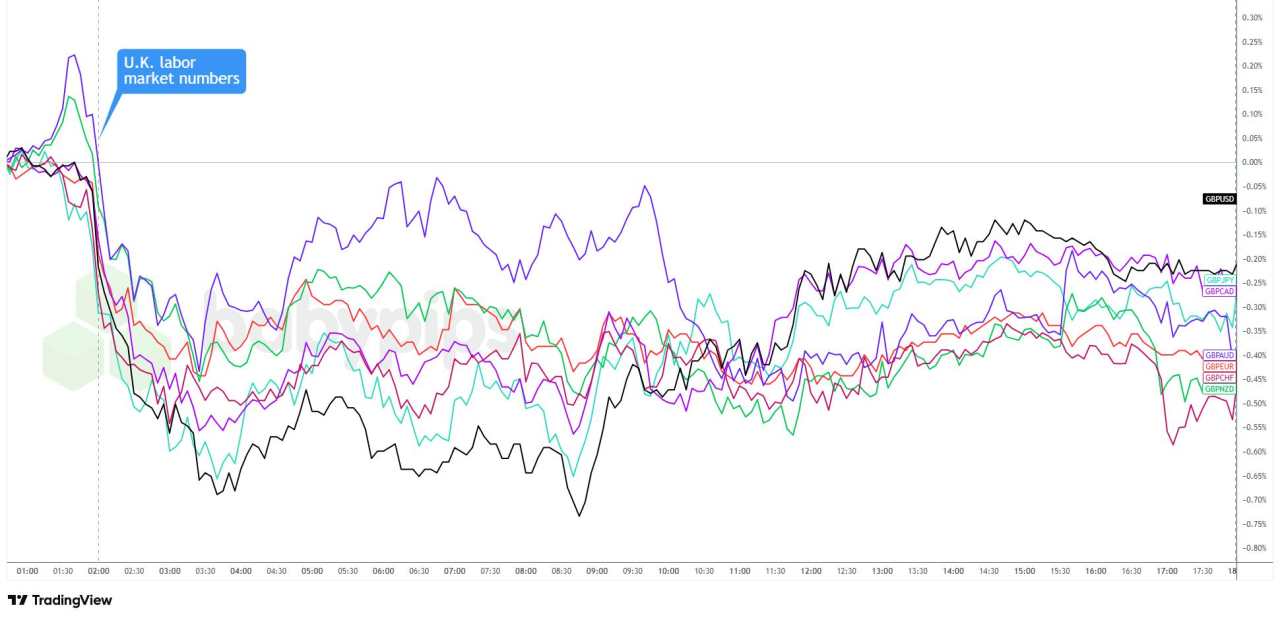The U.K. labor market deteriorated further in the three months to August 2025, with unemployment rising to 4.8% – its highest level since May 2021.
The latest Office for National Statistics data revealed a concerning mix of rising joblessness and persistent wage pressures that complicated the Bank of England’s (BOE) policy outlook.
The latest reports suggest that U.K. businesses are reducing hiring or choosing not to replace departing workers as economic uncertainty mounts. The deteriorating employment conditions also partly reflected the impact of higher National Insurance contributions and increased minimum wages implemented earlier in 2025.
Key Takeaways:
- Unemployment rate jumped to 4.8% in June-August 2025, up from 4.7% in the previous quarter and well above 4.1% a year ago
- Claimant count surged by 25,800 in September to 1.692 million, far exceeding forecasts of 10,300
- Regular wage growth (excluding bonuses) slowed to 4.7% year-on-year, while total pay rose 5.0%
- Job vacancies fell to 717,000 in July-September, marking the 39th consecutive quarterly decline
- Payroll employment dropped by 10,000 m/m, with an annual decline of 93,000
While the weakening labor market suggested economic momentum was fading – potentially justifying further rate cuts – the 5.0% wage growth remained well above levels consistent with the BOE’s 2% inflation target.
The sustained decline in job vacancies for nearly 10 years also signaled persistent weakness in labor demand, suggesting that businesses remained cautious about expansion amid ongoing economic uncertainties. This broad-based deterioration in labor market indicators pointed to potential challenges for U.K. growth in the months ahead.
Link to U.K. ONS Labour Market Overview (September 2025)
Market Reaction
British Pound vs. Major Currencies: 5-min

Overlay of GBP vs. Major Currencies Chart by TradingView
The significant jump in the claimant count and the breach of the psychologically important 4.8% unemployment level likely reinforced expectations that the U.K. economy was losing steam more rapidly than anticipated.
The British pound, which had been taking cues from countercurrency flows, got slammed broadly and sharply after the data hit. Sterling took the hardest beating against the Canadian dollar and safe-haven currencies like the dollar, yen, and franc before clawing back some losses an hour later.
The pound chopped around through most of the day, but the early London selloff set the tone. By the time New York closed up shop, GBP ended lower across the board, except against commodity-related currencies like the Aussie and Kiwi.


加载失败()